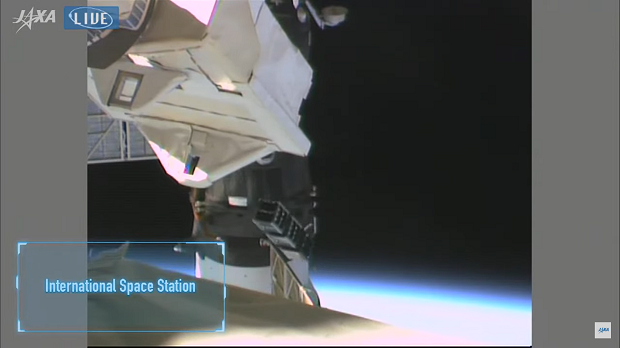The Philippines marked another milestone in its nascent space industry as Maya-3 and Maya-4, the country’s first university-built cube satellites (CubeSats), were released to space from the International Space Station (ISS) on October 6, 2021 at 5:20 in the afternoon via Japan’s Japanese Experiment (JEM) or “Kibo” Laboratory Module.

(Captured from the JAXA livestream)
The JEM Small Satellite Orbital Deployer (J-SSOD), including satellite install cases with the CubeSats, were installed on the Multi-Purpose Experiment Platform (MPEP) by ISS crew members and was passed through the Kibo airlock for retrieval, positioning, and deployment by the Japanese Experiment Module Remote Manipulator System (JEMRMS).
The released CubeSats will move along an orbit similar to the space station’s, which is at an altitude of approximately 400 kilometers.

(Captured from the JAXA livestream)
The latest development follows the CubeSat’s launch to the space station on August 29, 2021 at 3:14 P.M. (PST) aboard the SpaceX Falcon 9 rocket’s Dragon C208 as part of SpaceX Commercial Resupply Mission-23 (SpX-23).
They have been released along with other CubeSats from Australia, namely, Biner-1 and CUAVA-1, developed by Curtin University and the University of Sydney, respectively.

The two CubeSats were developed under the Space Science and Technology Proliferation through University Partnerships (STeP-UP) Project of the STAMINA4Space Program, which is funded by the Department of Science and Technology (DOST) and implemented by the University of the Philippines Diliman (UPD) and the DOST Advanced Science and Technology Institute (DOST-ASTI).
Maya-3 and Maya-4 were built by the first of two batches of STeP-UP scholars taking the nanosatellite development track under the Master of Science (MS)/Master of Engineering (MEng) program of the UPD Electrical and Electronics Engineering Institute (EEEI).

The development of the CubeSats is in collaboration with the Kyushu Institute of Technology (Kyutech) in Japan, with scholarship support from DOST-Science Education Institute (DOST-SEI).
“This is a very historic and important day, because the world has witnessed the deployment of the Maya-3 and Maya-4 cube satellites from the International Space Station (ISS) to outer space. These two CubeSats are the first Philippine university-built cube satellites developed by Filipino scholars,” said DOST secretary Fortunato de la Peña in his message during the deployment program hosted by the Japan Aerospace Exploration Agency (JAXA), and congratulated all the groups involved.

UPD Chancellor Fidel Nemenzo commented on the impact this latest development will make on the youth. “As I have said during the launch of microsatellites Diwata-1 and Diwata-2, this project of building our own satellites has the power to inspire students and young children to study space science and engineering,” he said.
“This will help break down psychological barriers for many young and aspiring scientists. Space technology is no longer something we just read in books and see in movies. Space is no longer the exclusive territory of advanced, industrialized countries and superpowers. Space is something within our reach, especially with support from the government, and the public and our partners.”
Now that the satellites are in space, the STeP-UP Batch 1 scholars shared that this means they can begin testing the different functionalities of the CubeSats.




